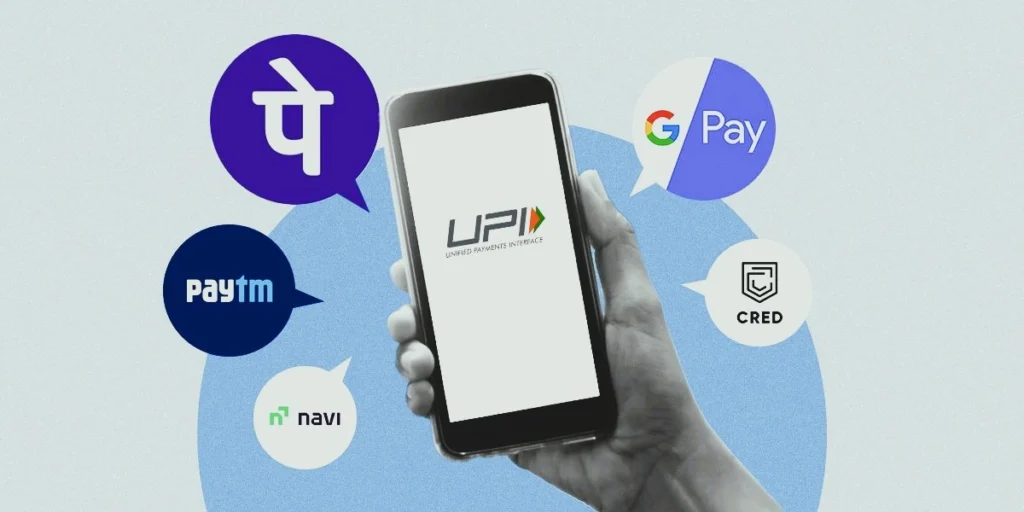UPI is becoming more popular every year, and millions of users depend on it for daily payments. Because of this heavy traffic, the NPCI (the organization that manages UPI in India) is bringing in a few new limits and safety rules to keep the network fast and secure.
1. Balance Enquiry – Limited to 50 Times Per Day (Per App)
Many users check their bank balance multiple times a day using apps like Google Pay, PhonePe and Paytm.
From August 1, each UPI app will let you check your balance only 50 times in a single day.
Example:
If you check your bank balance on PhonePe 50 times in a day, the 51st attempt will be blocked (just on PhonePe). You can still check it on another app if you want.
Why this change?
Because thousands of users continuously refresh their balance, it puts unnecessary pressure on the banking servers.
2. Viewing Linked Bank Accounts – 25 Times Per Day
Every time you go to “Manage Accounts” or “Linked Accounts” in your UPI app, it fetches information directly from your bank.
This action will now be limited to 25 times per day per app.
Tip: Try to avoid using the “linked accounts” option repeatedly unless really needed. It’s now considered a limited action like balance enquiry.
3. Transaction Status Checks – Only 3 Times Per Transaction
Let’s say you send money and the transaction goes “Pending”. It’s very common to keep tapping the “Check Status” button over and over.
From August 1, you can only check the status 3 times for a particular transaction, and you must wait at least 90 seconds between each attempt.
If you try to press it again before 90 seconds or after 3 attempts, it will show an error or block the request.
Why?
Too many repeated status requests slow down the system and increase the load on banks.
4. Auto-Debit / Autopay Timing Rules
This applies to things like EMIs, subscription payments, phone bills, OTT renewals, etc. (anything that is auto-paid every month via UPI).
Going forward, your UPI autopay will only be processed during these “low traffic” time slots:
| Allowed Times for Autopay |
|---|
| Before 10:00 AM |
| Between 1:00 PM – 5:00 PM |
| After 9:30 PM |
And only 1 attempt + maximum 3 retries are allowed.
So if your EMI payment fails during the first try, the system will retry only up to 3 more times. If it still fails after that, you’ll have to pay manually.
5. More Details Shown Before You Pay
To avoid sending money to the wrong person, UPI apps will now display both the recipient’s name AND their bank name clearly before you tap “Confirm”.
This gives users one last chance to double-check the details
Helps reduce frauds and accidental wrong transfers
6. Banks / UPI Apps Must Follow These Rules – or Face Penalties
These changes don’t affect just users — banks and payment apps also have to follow strict new guidelines:
- If they don’t follow the rules, the NPCI may reduce their API access (which slows down their service),
- Or even stop them from onboarding new customers temporarily.
So What Does All This Mean for You?
| Activity | What It Means in Simple Terms |
|---|---|
| Checking Bank Balance | You can check up to 50 times per day per app. After that, you’ll need to wait 24 hours. |
| Viewing Linked Accounts | Only 25 views per day per app are allowed. |
| Pending Transaction Status | You can refresh only 3 times, and need to wait 90 seconds between each refresh. |
| Autopay / Autodebit | Will be done only in pre-defined time slots, with 3 retry attempts if it fails. |
| Paying Someone | Before confirming, both name & bank of recipient will be shown prominently for better safety. |
| Overall | Slightly less flexibility, but much better stability, transparency, and safety for all UPI users. |
Final Thought
These new UPI guidelines might initially feel a bit restrictive — particularly for users who frequently check balances or automate payments — but they’re designed with long-term stability in mind.
By tightening a few rules now, the platform can better protect users, reduce failed transactions, and keep the overall system running smoothly as adoption continues to grow.
In the end, these changes are meant to create a safer and more reliable UPI experience for everyone.





